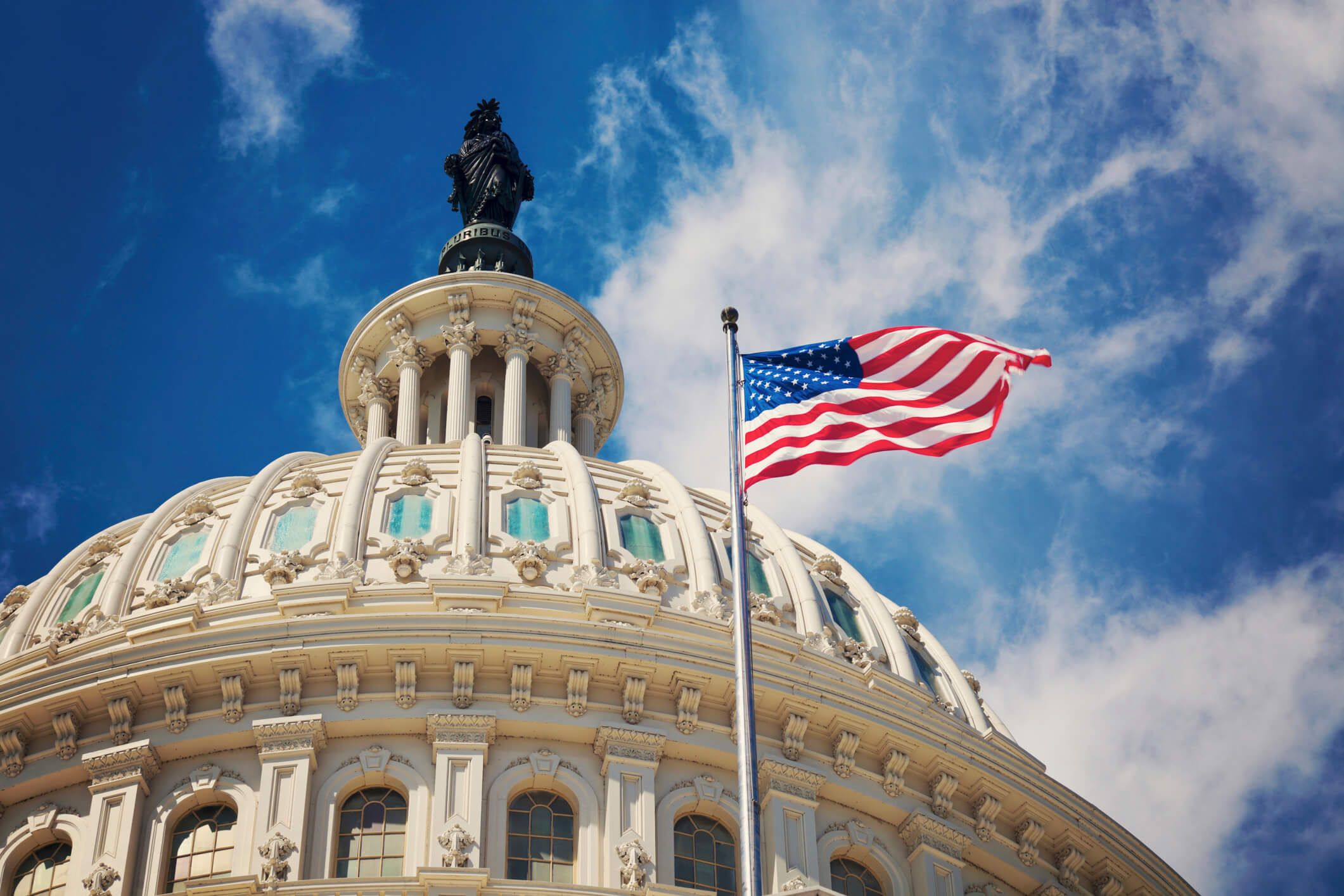Quick Hits
- The Supreme Court held that courts must exercise their independent judgment in deciding whether an agency acted within its statutory authority and may not defer to an agency’s interpretation when a law is ambiguous.
- The decision overruled the four-decades-old doctrine known as Chevron deference, in which courts had deferred to agencies’ reasonable interpretations of ambiguous statutes.
- The ruling will have a major impact on federal agencies’ rulemaking authority.
The Supreme Court decision in Loper Bright Enterprises v. Raimondo held that courts must exercise independent judgment in deciding whether an agency acted within its statutory authority and may not simply defer to the agency’s interpretation of ambiguities in the law.
The decision overrules the longstanding doctrine known as Chevron deference, under which courts would defer to a federal agency’s reasonable interpretation of an ambiguous law that the agency administers. The deference had provided the rules of such administrative agencies with the force of law, but that authority will, at a minimum, be weakened, along with the corresponding power of the agencies.
In the opinion of the Court, Chief Justice John Roberts wrote that Chevron deference “defies the command of the” Administrative Procedure Act (APA) that the court, “not the agency whose action it reviews … ‘decide all relevant questions of law’ and interpret … statutory provisions.” Chevron deference “requires a court to ignore, not follow, ‘the reading the court would have reached’ had it exercised its independent judgment as required by the APA.” (Emphasis in original).
The Court, in its majority, rejected the presumption that ambiguities in federal statutes are implicit delegations of authority to agencies, stating the “presumption is misguided because agencies have no special competence in resolving statutory ambiguities.”
The ruling will have significant implications for the multiple federal agencies that regulate employers, including the U.S. Department of Labor (DOL), the U.S. Equal Employment Opportunity Commission (EEOC), the Federal Trade Commission (FTC), the National Labor Relations Board (NLRB), Occupational Safety and Health Administration (OSHA), and the Office of Federal Contract Compliance Programs (OFCCP), among others.
Chevron Deference
Under the two-step Chevron deference framework, the court would first determine whether a statute in question was clear and unambiguous regarding an issue. If the statute was clear, then the court would give effect to it. If, however, the court found the statute was ambiguous or silent on the issue, then the court would proceed to step two. At that step, the court would determine whether the agency’s interpretation was a permissible or reasonable construction of the statute. If so, the court would uphold the agency’s interpretation.
The deference had allowed federal agencies leeway to act, allowing them to interpret ambiguities and fill gaps in the laws they enforce. However, the doctrine has been criticized in recent years as unconstitutionally allowing the Executive Branch’s policy positions to be advanced by federal agencies outside the democratic process and for taking power away from federal courts to interpret laws.
Background
The issue over Chevron deference came before the Supreme Court in two cases challenging a National Marine Fisheries Service (NMFS) rule that required fishing vessels to pay the salaries of federal observers that vessels are required to “carry” under the Magnus-Stevenson Act (MSA). The MSA is silent as to whether the fishing industry is responsible for paying the costs for the observers. Given concerns about funding, the NMFS rule required the vessels carrying the observers to pay the costs despite objections from the fishing industry over its negative economic impact on the livelihoods of commercial fishermen.
In Loper Bright Enterprises, four family-owned and –operated fishing companies argued that the NMFS cannot force vessels to pay for the observers because the MSA did not clearly give the agency power to do so. However, the D.C. Circuit Court of Appeals ruled in favor of the agency, finding that the law’s silence on the issue created an ambiguity that required deference to the agency.
Supreme Court Justice Ketanji Brown Jackson recused herself from the Loper Bright case as she had sat on the D.C. Circuit panel that had ruled in the case. The Court then added Relentless, Inc. v. Department of Commerce, in which the owner of fishing vessels raised a similar challenge to the NMFS rule. The challengers argued that since the MSA provides for observers to be paid in at least three other contexts, the NMFS did not have the authority to require fishing vessels to pay for them. But the First Circuit Court of Appeals affirmed a district court finding that “the rule is a permissible exercise of the agency’s authority and is otherwise lawful.”
At the Supreme Court, the challengers in Loper Bright Enterprises argued that the Court should “either abandon Chevron for good or at least substantially cabin its scope” because it has “proved unworkable” and has “seriously distorted how the political branches operate.” They argued that stare decisis does not bar the Court from abandoning the framework since the Court would not have to change the outcome of the case in which the deference was established but merely alter the interpretative methodologies used. Similarly, the challengers in Relentless argued that the deference is unconstitutional because it “compromise[es] judges’ independence when interpreting the law,” which is a power vested in the federal courts under Article III of the U.S. Constitution.
Decision
In deciding Loper Bright, the Supreme Court stated that courts simply “do not throw up their hands because ‘Congress’s instructions have’ supposedly ‘run out.’” “Courts instead understand that such statutes, no matter how impenetrable, do—in fact, must—have a single, best meaning. … So instead of declaring a particular party’s reading ‘permissible’ in such a case, courts use every tool at their disposal to determine the best reading of the statute and resolve the ambiguity,” the Court stated.
The Supreme Court further stated that agencies do not have any special ability to interpret ambiguities, “even when an ambiguity happens to implicate a technical matter” as “Congress expects courts to handle technical statutory questions.” However, the Court stated that courts do not decide cases “blindly” and instead, rely on arguments from the parties and amici, noting that an agency’s interpretation “may be especially informative.”
“The better presumption is therefore that Congress expects courts to do their ordinary job of interpreting statutes, with due respect for the views of the Executive Branch,” the court stated. “And to the extent that Congress and the Executive Branch may disagree with how the courts have performed that job in a particular case, they are of course always free to act by revising the statute.”
However, the Court noted that the decision does “not call into question prior cases that relied on the Chevron framework,” as cases upholding specific agency actions “are still subject to statutory stare decisis despite our change in interpretative methodologies.”
Justice Elena Kagan and Justice Sonia Sotomayor dissented and were joined by Justice Jackson to the extent it applied to the Relentless case. In the dissenting opinion authored by Justice Kagan, the justices argued that Chevron deference “has formed the backdrop against which Congress, courts, and agencies—as well as regulated parties and the public—all have operated for decades” and “has been applied in thousands of judicial decisions.”
They argued that Chevron deference is “right” and the “obvious choice” to resolve ambiguities because “[a]gencies have expertise” that “courts do not.” Further, agencies report to the president, “who in turn answers to the public for his policy calls; courts have no such accountability and no proper basis for making policy.” Moreover, “Congress has conferred on that expert, experienced, and politically accountable agency the authority to administer—to make rules about and otherwise implement—the statute giving rise to the ambiguity or gap,” Justice Kagan wrote.
Next Steps
The Supreme Court’s latest decision is likely to shift power dynamics by weakening agency authority to interpret ambiguous statutes and increasing judicial scrutiny. At a minimum, agencies may need to provide stronger justifications on the merits for their interpretations, and overall, they may be less likely to issue rulemaking in areas where statutory authority is not clear.
The decision is also likely to increase litigation and legal uncertainty, as it potentially opens the floodgates to a wave of legal challenges to overturn all sorts of existing agency rules that have been upheld citing Chevron deference and legal challenges to new agency rules moving forward. For example, this decision likely will have significant impact on the litigation challenging the Federal Trade Commission’s (FTC) rule purporting to ban noncompetes nationally.
Ogletree Deakins will continue to monitor developments and will provide updates on the Employment Law, Governmental Affairs, Government Contracting, and Reporting, Traditional Labor Relations, Unfair Competition and Trade Secrets, Wage and Hour, and Workplace Safety and Health blogs.
Follow and Subscribe













